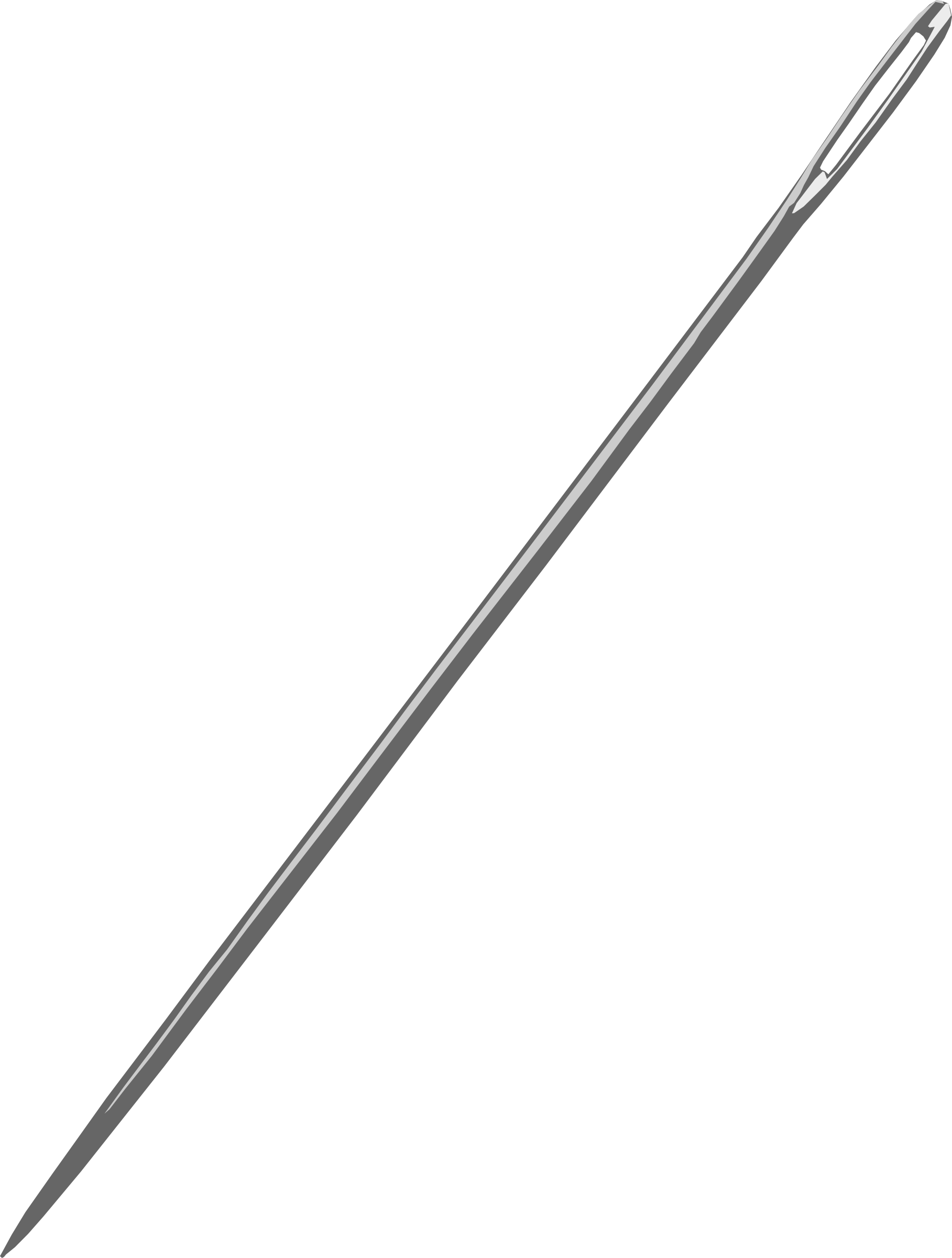
This image has format transparent PNG with resolution 1817x2400.
You can download this image in best resolution from this page and use it for design and web design.
Sewing needle PNG with transparent background you can download for free, just click on download button.
A sewing needle, used for hand-sewing, is a long slender tool with a pointed tip at one end and a hole (or eye) at the other. The earliest needles were made of bone or wood; modern needles are manufactured from high carbon steel wire and are nickel- or 18K gold-plated for corrosion resistance. High quality embroidery needles are plated with two-thirds platinum and one-third titanium alloy. Traditionally, needles have been kept in needle books or needlecases which have become objects of adornment. Sewing needles may also be kept in an étui, a small box that held needles and other items such as scissors, pencils and tweezers.
Needle size is denoted by one or more numbers on the manufacturer's packet. The general convention for sizing of needles, like that of wire gauges, is that within any given class of needle the length and thickness of a needle increases as the size number decreases. For example, a size 9 needle will be thicker and longer than a size 12 needle. However, the needle sizes are not standardized and so a size 10 of one class may be (and in some cases actually is) either thinner or finer than a size 12 of another type. Where a packet contains a needle count followed by two size numbers such as "20 Sharps 5/10" the second set of numbers correspond to the range of sizes of needle within the packet, in this case typically ten sharps needles of size 5 and ten of size 10 (for a total of 20 needles). As another example, a packet labeled "16 Milliners 3/9" would contain 16 milliners needles ranging in sizes from 3 to 9.
Hand sewing needles come in a variety of types/ classes designed according to their intended use and in a variety of sizes within each type.
Sharp needles: used for general hand sewing; built with a sharp point, a round eye, and are of medium length. Those with a double-eyes are able to carry two strands of thread while minimizing fabric friction.
Appliqué: These are considered another all-purpose needle for sewing, appliqué, and patch work.
Embroidery: Also known as crewel needles; identical to sharps but have a longer eye to enable easier threading of multiple embroidery threads and thicker yarns.
Betweens or quilting : These needles are shorter than sharps, with a small rounded eye and are used for making fine stitches on heavy fabrics such as in tailoring, quilt making and other detailed handwork; note that some manufacturers also distinguish between quilting needles and quilting between needles, the latter being slightly shorter and narrower than the former.
Milliners: A class of needles generally longer than sharps, useful for basting and pleating, normally used in millinery work.
Easy- or self-threading: Also called calyx-eyed sharps, side threading, and spiral eye, these needles have an open slot into which a thread may easily be guided rather than the usual closed eye design.
Beading: These needles are very fine, with a narrow eye to enable them to fit through the centre of beads and sequins along with a long shaft to thread and hold a number of beads at a time.
Bodkin: Also called ballpoints, this is a long, thick needle with a ballpoint end and a large, elongated eye. They can be flat or round and are generally used for threading elastic, ribbon or tape through casings and lace openings.
Chenille: These are similar to tapestry needles but with large, long eyes and a very sharp point to penetrate closely woven fabrics. Useful for ribbon embroidery.
Darning: Sometimes called finishing needles, these are designed with a blunt tip and large eye making them similar to tapestry needles but longer; yarn darners are the heaviest sub-variety.
Doll: Not designed for hand sewing at all, these needles are made long and thin and are used for soft sculpturing on dolls, particularly facial details.
Leather: Also known as glovers and as wedge needles, these have a triangular point designed to pierce leather without tearing it; often used on leather-like materials such as vinyl and plastic.
Sailmaker: Similar to leather needles, but the triangular point extends further up the shaft; designed for sewing thick canvas or heavy leather.
Tapestry: The large eye on these needles lets them to carry a heavier weight yarn than other needles, and their blunt tip—usually bent at a slight angle from the rest of the needle—allows them to pass through loosely woven fabric such as embroidery canvas or even-weave material without catching or tearing it; comes in a double-eyed version for use on a mounted frame and with two colors of thread.
Tatting: These are built long with an even thickness for their entire length, including at the eye, to enable thread to be pulled through the double stitches used in tatting.
Upholstery: These needles are heavy, long needles that may be straight or curved and are used for sewing heavy fabrics, upholstery work, tufting and for tying quilts; the curved variety is practical for difficult situations on furniture where a straight needle will not work. Heavy duty 12" (30 cm) long needles are used for repairing mattresses. Straight sizes: 3"-12" long, curved: 1.5"-6" long.
In this page you can download free PNG images: Sewing needle PNG images free download